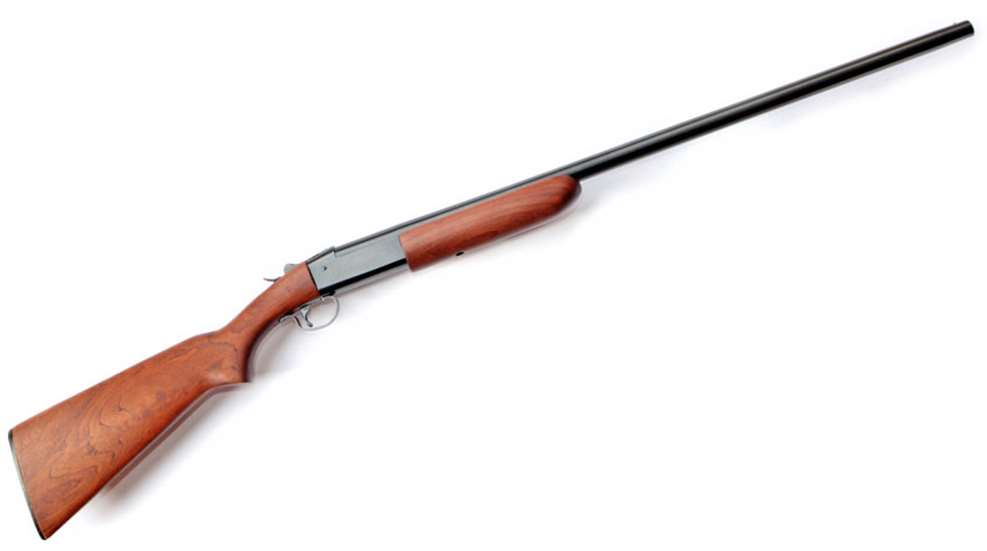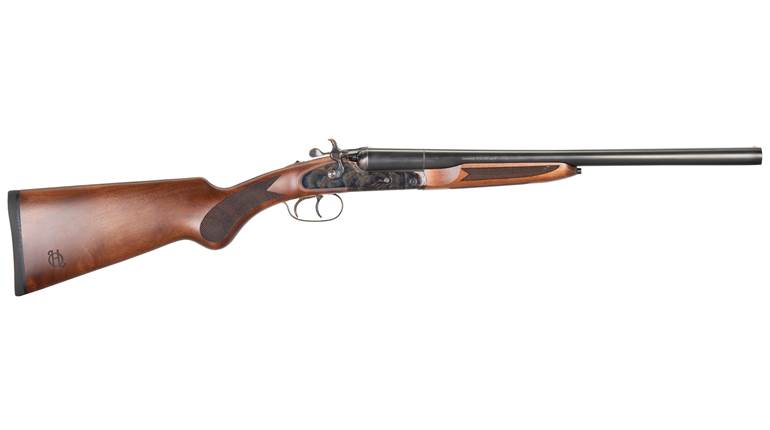
Few firearms have the simplicity of a single-barrel shotgun. At one time it was hard to find a country home or rural farmstead that didn’t have one hanging over the mantel or leaning in a corner, ready to put food on the table or keep varmints at bay. They were made by manufacturers such as Iver Johnson, Harrington & Richardson and Hopkins & Allen, and marketed under various store brands with impressive names like “Mohawk” and “Nitro Hunter.”
In an effort to capture the low-cost-shotgun market, Winchester started manufacturing utilitarian shotguns following World War I. The first was the break-open Model 20 in .410 bore. That was followed by two single-shot, bolt-action shotguns—the Model 36 “Garden Gun,” chambered for a 9 mm rimfire shot cartridge, and the .410 Model 41. These shotguns were short-lived, with production of each ending after about a decade, with only about 20,000 of each model made.
In 1936, Winchester introduced its Model 37, a single-barrel, break-open shotgun with an exposed hammer spur (or “semi-hammerless” as Winchester called it) and an automatic ejector. The Great Depression was on, and people were looking for value. The 37 was “a super-strong, safe, dependable, hard-shooting, single-shot gun at an exceptionally low price,” a Winchester ad claimed. At $8.98, the Model 37 retailed for about a fifth the cost of Winchester’s pump-action Model 12 shotgun, a price that put it in line with similar products offered by its competitors.

In the 1930s “utilitarian” did not mean cheaply constructed. The Model 37s used forged steel parts (the barrel markings proclaimed they were “STEELBILT”) and were outfitted with walnut stocks. They were available in five chamberings—12, 16, 20 and 28 gauges, and in .410 bore—in barrel lengths from 26" to 32". Most came with a full choke, although modified and cylinder chokes were available as options.
More than 1,015,000 Model 37s were manufactured before production ended in 1963. Winchester replaced it with the Canadian-made Model 370 in 1968 and the 37A in 1973. Despite the numbers, fewer Model 37s have survived in nice condition than one might expect. As a utilitarian firearm, many show hard usage, and the turkey-shoot craze of the 1990s led to many 37s being modified and customized.
For collectors there are a few variations in production to note and, though Model 37s were not serial-numbered, they can be approximately dated by their features. The earliest Model 37s used a release lever made of stamped steel with a folded tang, known as a “pigtail.” About the first 200,000 Model 37s produced up to 1948 had “Winchester” stamped into the underside of their receivers and filled with red paint. Known as “Red Letters,” these 37s will bring a premium. The hammer went through four different changes. The stock profile changed slightly over the years, and later production had “Winchester”-marked buttplates.
The 28 gauge, which was dropped in 1958, is the rarest chambering for the Model 37, with early Red Letter 28 gauges bringing up to $3,000. After that the .410 brings the next highest price. The 32" barrel will add a premium. Many collectors work to assemble a full set of examples in each gauge.
The Model 37 pictured is a late-production 30"-barreled, 12-ga. example that is unmodified and appears to be unfired. As such, its value would be around $400. “Shooter-grade” 37s can still be had in the $200 range. As either a collector or a shooter, Model 37s still represent a good value for the price and an excellent example of a practical and quintessentially American firearm.
Gun: Model 37
Manufacturer: Winchester
Gauge: 12; 30" barrel
Condition: NRA Excellent (Modern Gun Standards)
Value: $400


































